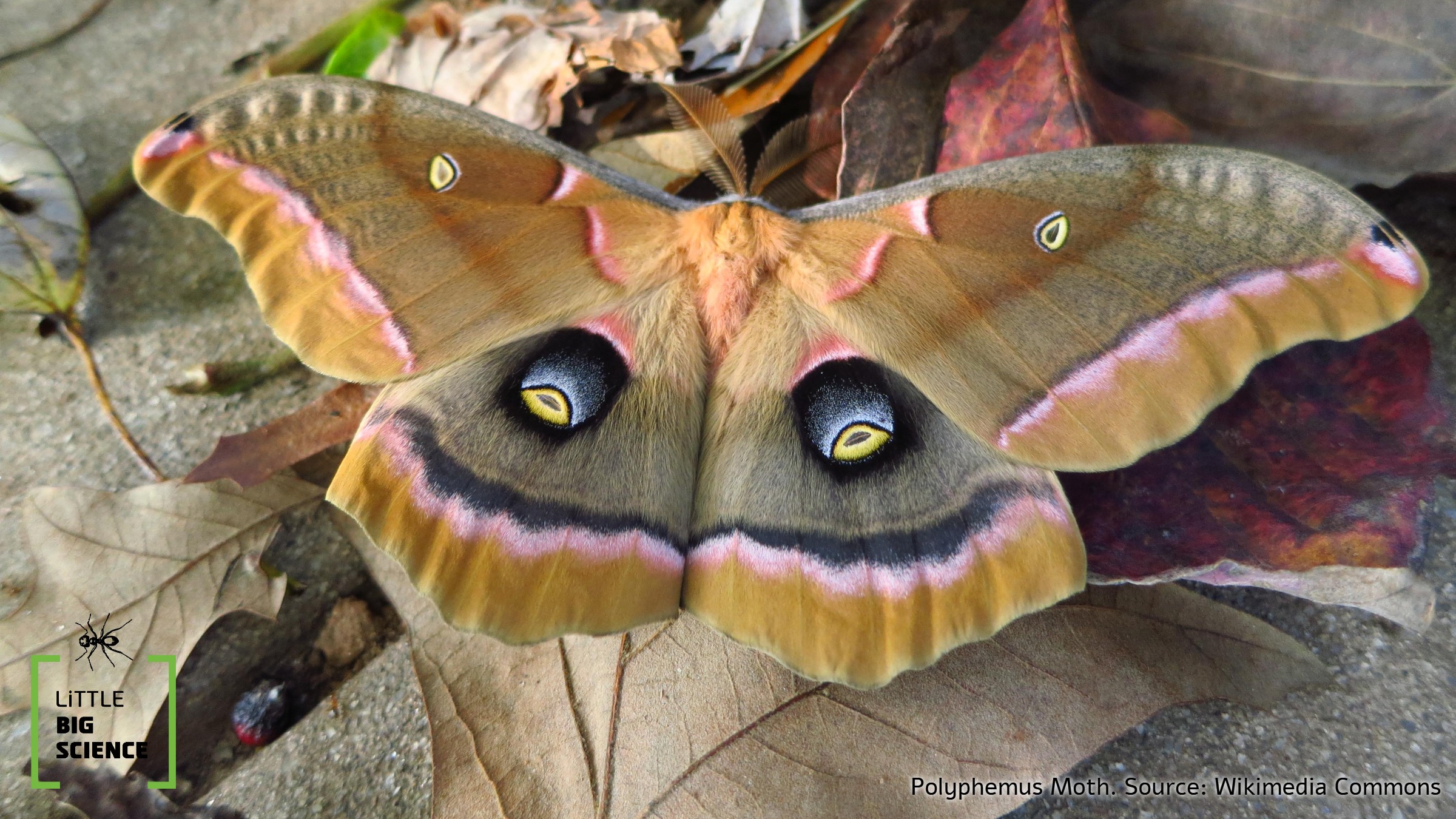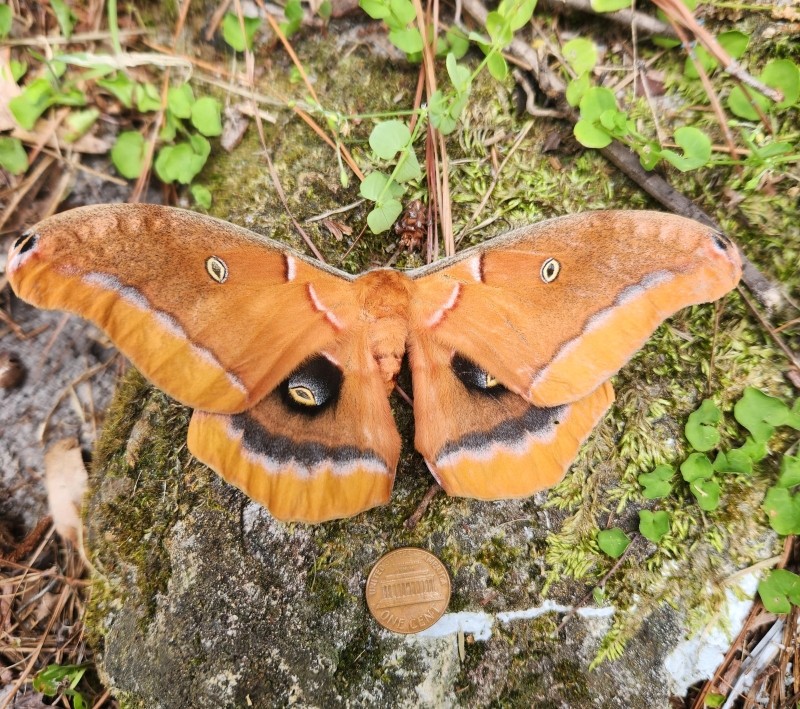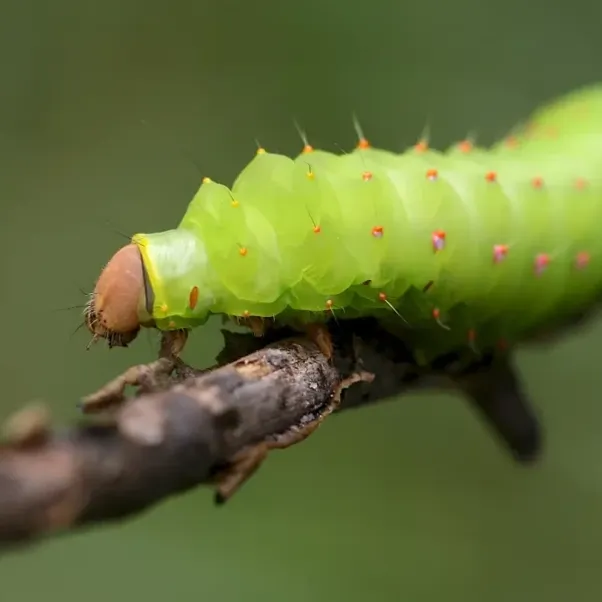
Advertisement
The Polyphemus Moth (Antheraea polyphemus) is one of the largest moths in North America—its wingspan reaches 10–15 cm! See it in the photo alongside a U.S. penny.

Photo: Maya Saar
For some reason, the moth is named after Polyphemus—the giant Cyclops from Greek mythology who had a single eye in the middle of his forehead. Yet the moth actually has two large purple spots in the center of its hind wings that resemble a pair of eyes. Perhaps whoever named the moth could not count…
The species is found in 48 of the 50 U.S. states, as well as in southern Canada and Mexico. To protect itself, the adult moth folds its forewings forward and often flutters them so that the “eyes” on its hind wings become visible. These false eyes appear to confuse potential predators, who may interpret them as the eyes of a threatening animal. In one intriguing observation, a moth exposed its eyespots in flight and successfully deterred a Blue Jay from catching it.

Source: Animalia.bio
The larva—the moth’s juvenile stage—is light green and spiny in appearance. When threatened, it may raise its front body into a Sphinx-like posture, perhaps to alter its shape to look less like a caterpillar. If the attack continues, it produces clicking sounds with its mouthparts and may then regurgitate a liquid with a repulsive taste and smell—all in an effort to avoid predation. Mice and ants have been seen deterred at the sound of the clicks, so the noise may serve to warn predators before the repellent is released [1].
In short, this Cyclops boasts several impressive defense strategies!
Hebrew editing: Smadar Raban
English editing: Elee Shimshoni
References:







